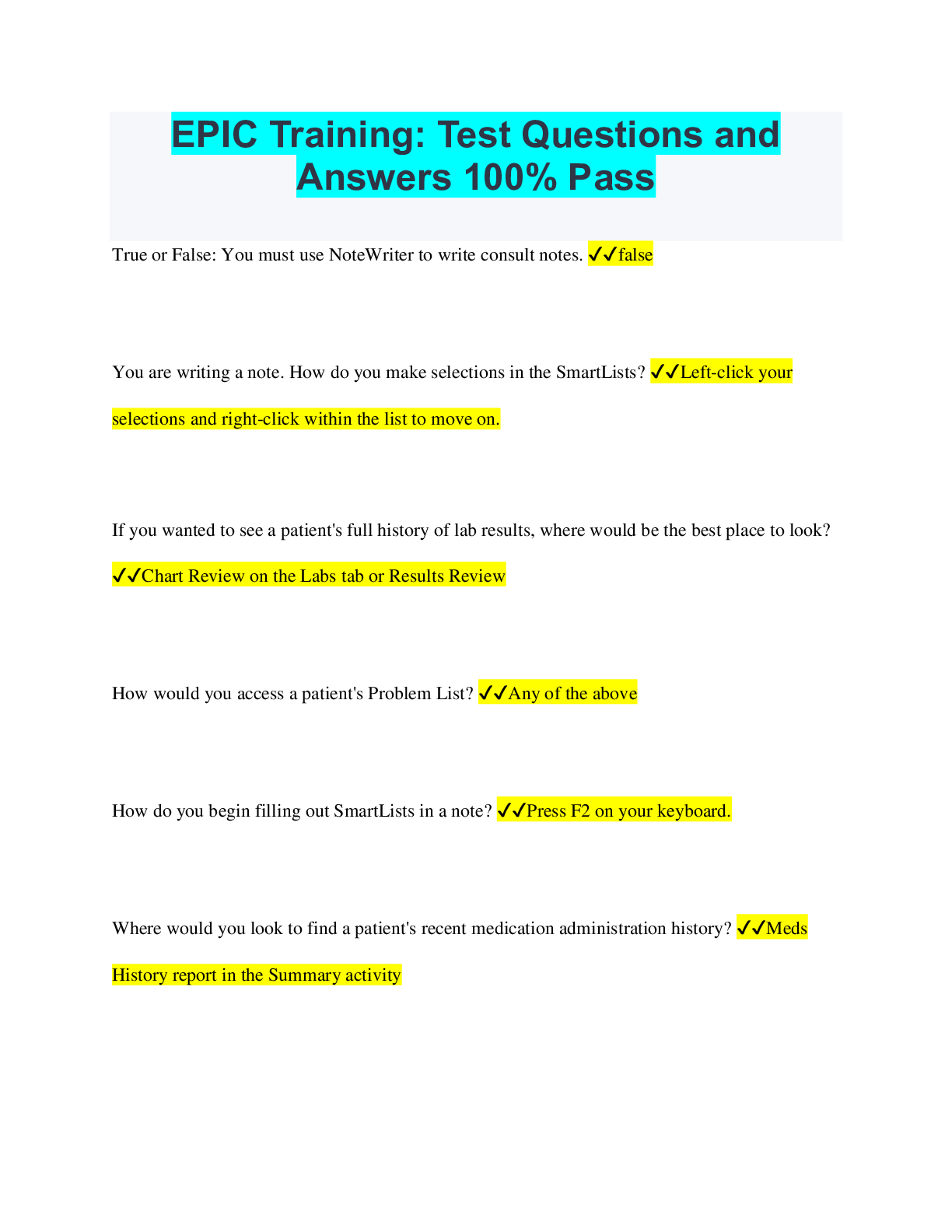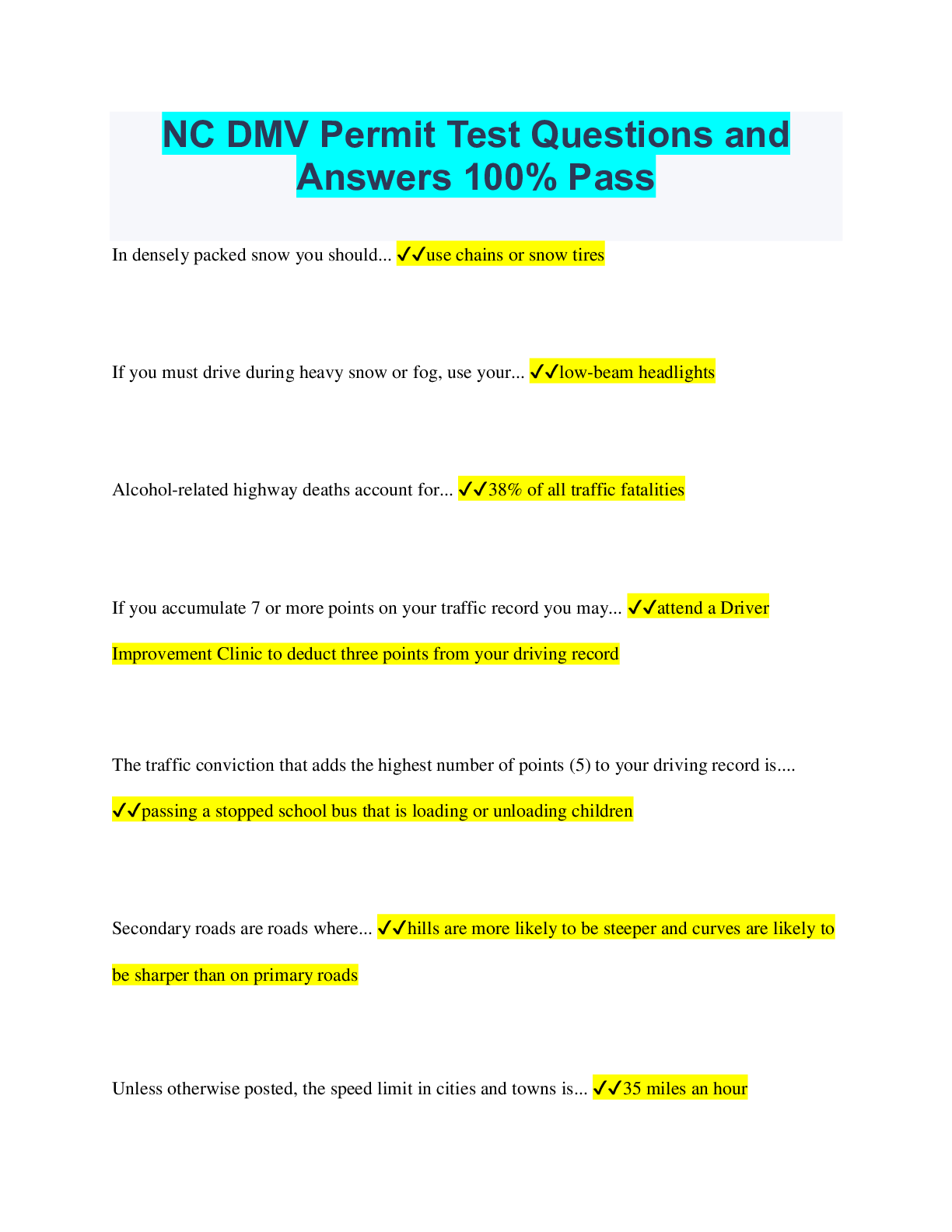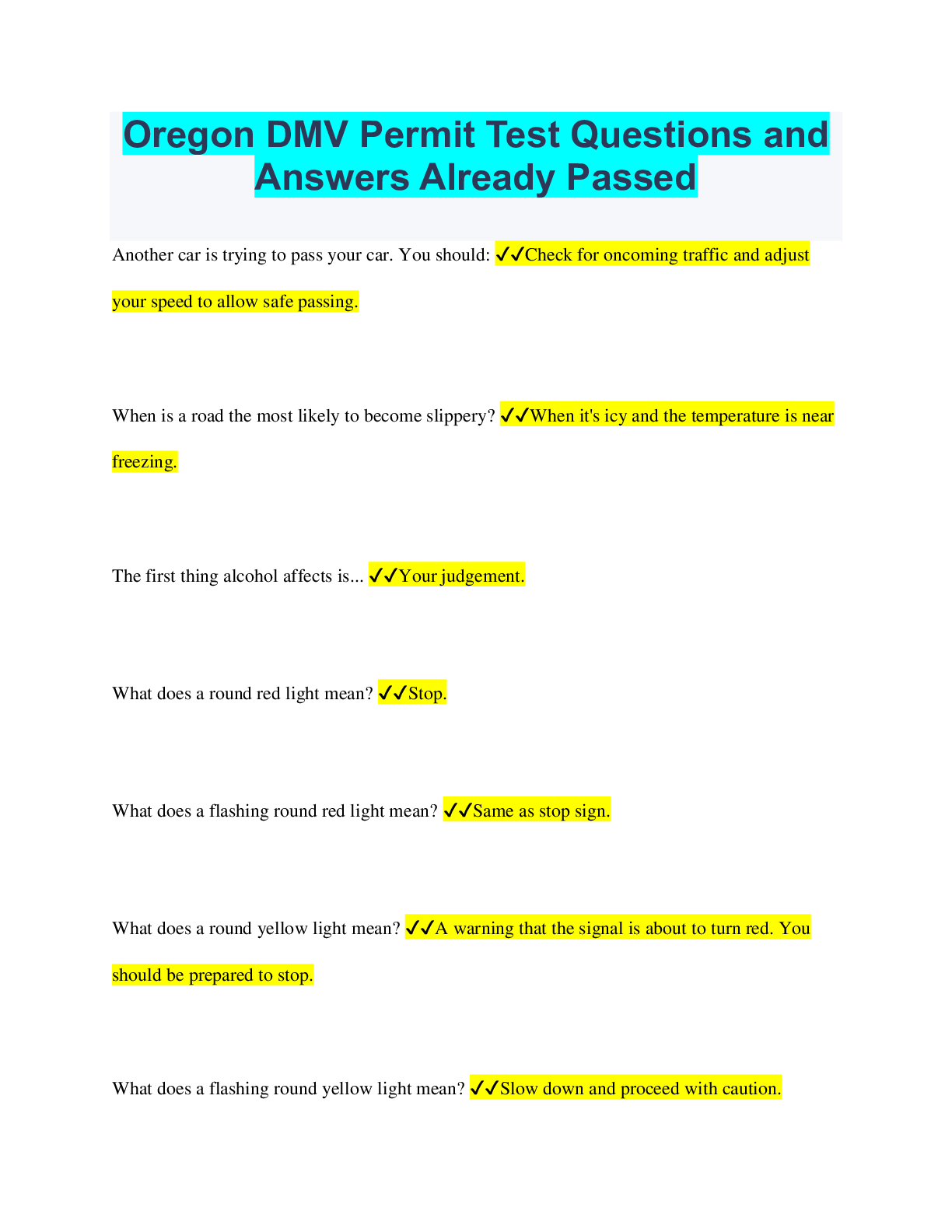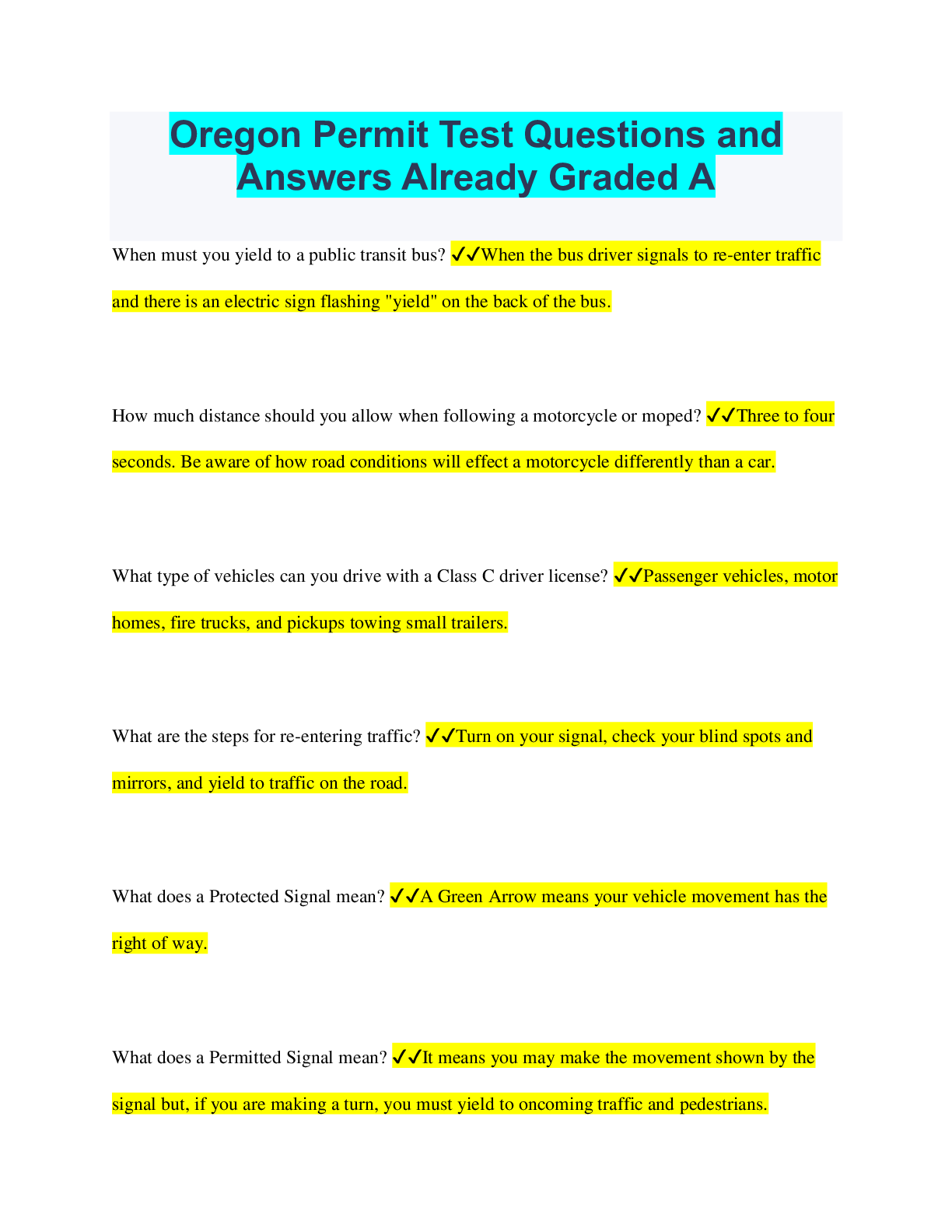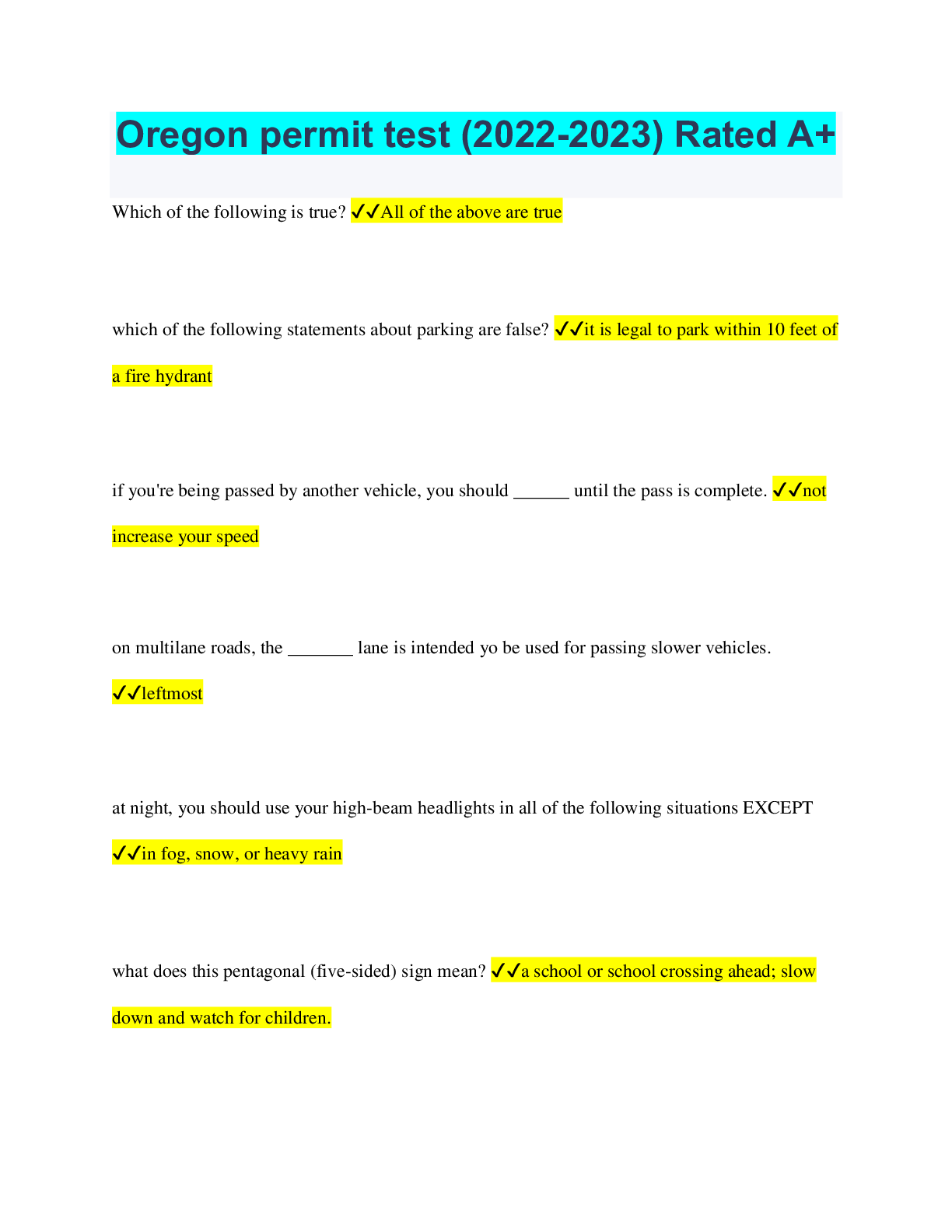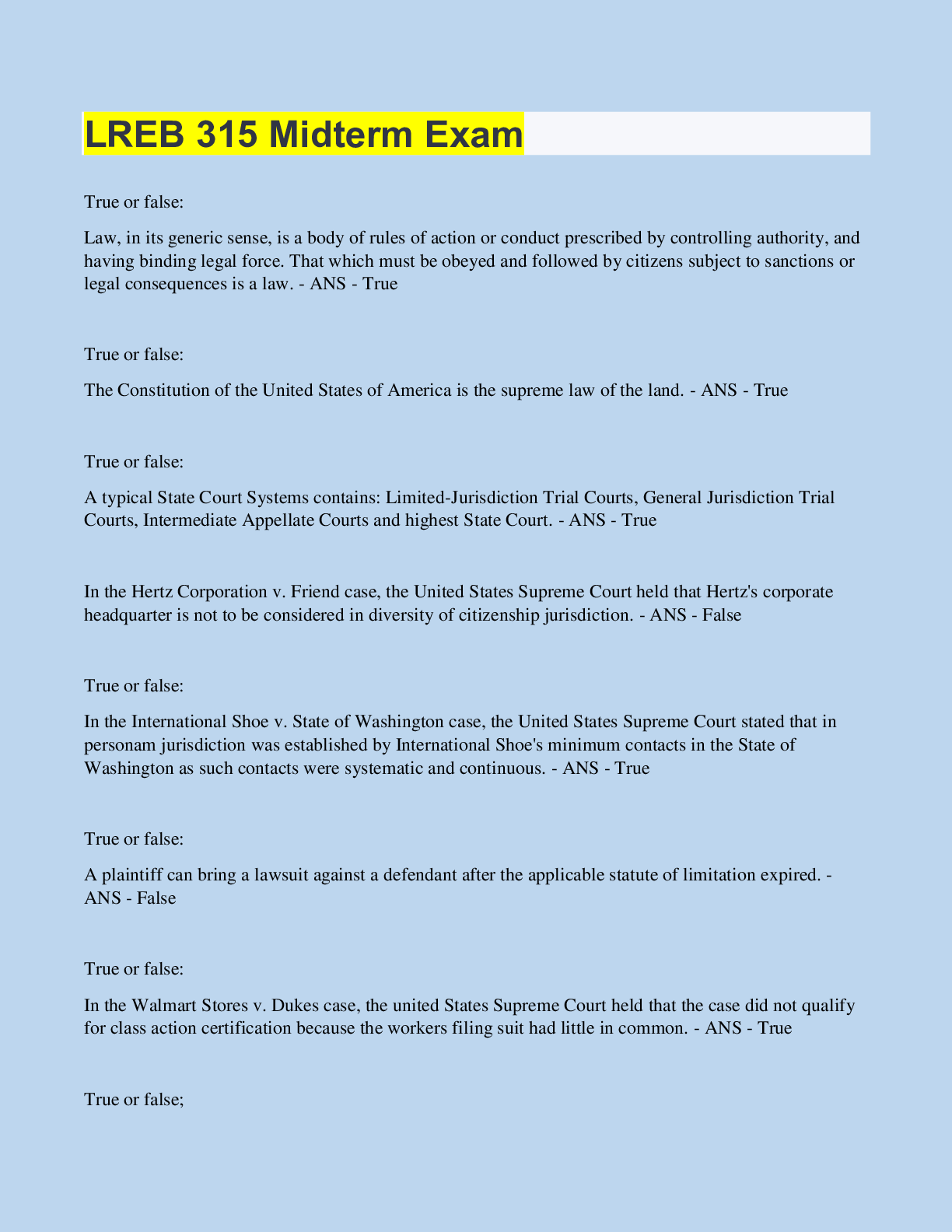Health Care > QUESTIONS & ANSWERS > CRCR Unit 2 (2.1 - 2.7) Pre-Service - Financial Care Latest 2023 (All)
CRCR Unit 2 (2.1 - 2.7) Pre-Service - Financial Care Latest 2023
Document Content and Description Below
CRCR Unit 2 (2.1 - 2.7) Pre-Service - Financial Care Latest 2023 Time-of-Service collection steps (The Program) ✔✔1. Begin interview with a simple greeting to the patient. 2. Provide your name... and explain why you are meeting at this time. 3. Treat the patient with respect and dignity trying to develop a rapport. 4. Inquire if the timing of the visit represents an acceptable time to talk about financial matters. 5. Assume the patient may not understand how insurance works & how hospitals charge for services. Be prepared to explain how you determined what the patient owes & be prepared to show the calculations. 6. Once the patient understand how you arrived at the amount due, simply as for the payment in full. 7. When receive payment, process it according to your hospital's receipting rules and provide a detailed receipt to the patient. Acute Healthcare Facility - what types of patients are there? ✔✔Scheduled, unscheduled, and non-acute types Non-Acute Patient Types ✔✔Skilled nursing, hospice care,, home health services, durable medical equipment (DME), and clinic. Identify the different patient types and when to use each patient type ✔✔A. Scheduled - healthcare facility knows the patient is coming ahead of time, any non emergent clinical service. Can be registered ad inpatients outpatients,, or reoccurring / series patient types. B. Unscheduled - Many patients receive healthcare services that are not scheduled ahead of time. The types include: 1. Inpatients or urgent patients 2. Outpatients or walk-in patients 3. Emergency patients 4. Observation patients 5. Newborns C. Non-Acute - services available to patients which are not normally provided in an acute hospital setting. 1. Skilled nursing 2. Hospice care 3. Home health services 4. Durable medical equipment (DME) 5. Clinic Scheduled patient types ✔✔Patients are considered scheduled if the healthcare facility knows that the patient is coming ahead of time. Normally schedule services that are high dollar and require significant pre-processing to ensure appropriate reimbursement and/or significant resource coordination. Any non-emergent clinical service is a candidate for scheduled patients in order to reduce wait times and maximize patient flow. Can be registered as inpatients, outpatients, or reoccurring / series patient types. What is resource coordination ✔✔Includes the following: A. Reserving rooms and/or equipment B. Ordering devices or supplies C. Ensuring that professional staff (physicians, nurses, and/or technicians) is available. Scheduled - outpatients ✔✔Patients that have services that do not involve an overnight stay or, if they involve and overnight stay, the patient does not meet inpatient acuity criteria. Examples of scheduled outpatient services. ✔✔A. Routine diagnostic testing in radiology (nuclear medicine, ultrasound, CT scan, PET scans, MRI's) B. Pulmonary function testing C. Interventional radiology D. Cardiology testing (EKG's, EEG's, catheterizations, and stress tests) E. Neurology F. Ambulatory surgery G. Pain management H. Laboratory testing (many provide [Show More]
Last updated: 2 years ago
Preview 1 out of 44 pages
.png)
Buy this document to get the full access instantly
Instant Download Access after purchase
Buy NowInstant download
We Accept:

Also available in bundle (1)
.png)
CRCR BUNDLED EXAMS QUESTIONS AND ANSWERS WITH VERIFIED SOLUTIONS
CRCR BUNDLED EXAMS QUESTIONS AND ANSWERS WITH VERIFIED SOLUTIONS
By Nutmegs 2 years ago
$19
12
Reviews( 0 )
$10.00
Can't find what you want? Try our AI powered Search
Document information
Connected school, study & course
About the document
Uploaded On
Jan 14, 2023
Number of pages
44
Written in
Additional information
This document has been written for:
Uploaded
Jan 14, 2023
Downloads
0
Views
153

.png)


